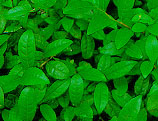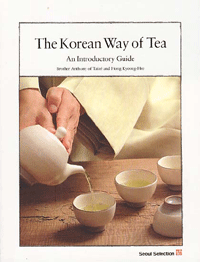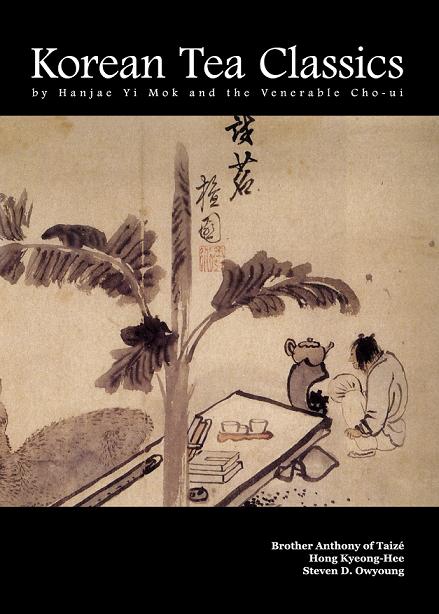 Brother Anthony's Korean
(& Chinese) Tea Pages
Brother Anthony's Korean
(& Chinese) Tea Pages  Brother Anthony's Korean
(& Chinese) Tea Pages
Brother Anthony's Korean
(& Chinese) Tea Pages
Tea-drinking becomes a ceremony
Tea in Korea and Japan
(revised in April 2012) with links to some
poems by the Ven. Cho-ui and pictures
of places associated with the Ven. Cho-ui
Panyaro: The Korean
Way of Tea and the Ven. Hyodang
Tea making at Gucheung-am in
Hwaeom-sa
Tea-making
in Jiri-san, May 2006. Click on a thumbnail to start
the slide show.
Tea-making
at Gucheung-am, Hwaeom-sa, Jiri-san, May 2009
The
Korean way of making oxidized / fermented 'parhyo-cha'
(yellow tea) A 2016 page describing the steps in the making of Parhyo
Tea
Panyaro - the Korean Way of Tea A 2013 video of the Panyaro tea ceremony
Panyaro - some new pictures from May 2000
The Oriental Beauty Tea
made in Peipu
 The
Korean Way of Tea : An Introductory Guide by Brother Anthony of
Taize and Hong Kyeong-Hee. 2007. This book is an expansion of the
contents of my online tea pages, with a lot of photos. It can be
obtained from Seoul
Selection, the publishers. See a
very kind review of it by Lauren Deutsch in Kyoto
Journal
The
Korean Way of Tea : An Introductory Guide by Brother Anthony of
Taize and Hong Kyeong-Hee. 2007. This book is an expansion of the
contents of my online tea pages, with a lot of photos. It can be
obtained from Seoul
Selection, the publishers. See a
very kind review of it by Lauren Deutsch in Kyoto
Journal Korean Tea Classics by Hanjae Yi Mok and the
Venerable Cho-ui by Brother Anthony of Taiz�,
Hong Keong-Hee, Steven D. Owyoung 2010. This richly illustrated book contains
the Chinese text and translations of 3 fundamental texts of
Korean Tea culture: ChaBu, Rhapsody to Tea by
Hanjae Yi Mok; ChaSinJeon, A Chronicle of the Spirit of Tea
and DongChaSong, Hymn in Praise of Korean Tea by the
Venerable Cho-ui. It can be purchased online from the
publishers, Seoul
Selection. You can read the complete text of the
DongChaSong poem (without the notes) in English
here.
Korean Tea Classics by Hanjae Yi Mok and the
Venerable Cho-ui by Brother Anthony of Taiz�,
Hong Keong-Hee, Steven D. Owyoung 2010. This richly illustrated book contains
the Chinese text and translations of 3 fundamental texts of
Korean Tea culture: ChaBu, Rhapsody to Tea by
Hanjae Yi Mok; ChaSinJeon, A Chronicle of the Spirit of Tea
and DongChaSong, Hymn in Praise of Korean Tea by the
Venerable Cho-ui. It can be purchased online from the
publishers, Seoul
Selection. You can read the complete text of the
DongChaSong poem (without the notes) in English
here. Powerpoint presentations and photos
A 2011 Powerpoint slideshow The Korean Way of Tea covering many aspects of Korean tea history etc. This focuses on the 'wild' tea that has grown around Korean temples for centuries and is usually thought to derive from tea planted by monks who brought tea seeds back with them from China. Recent genetic research has confirmed strikingly that the cultivars found as wild tea near Korean temples do indeed resemble closely those found in China, rather than Japan.
Blogs and
magazines
Steve Owyoung has a fine blog devoted to
highly intelligent notes on various aspects of tea.
Scott Shangguan has a tea-centered blog which is combined with his online tea store, Chinese Tea Culture, but down the left-hand column of that page you can find a lot of non-commercial information pages about tea.
Cha Dao
was the ultimate Tea Blog but it has been dead since early
2011. In it there is (in particular) a fascinating article
about
Lu T�ung and Lu Y� written by Steve Owyoung, THE expert on
Chinese tea history.
Mattcha's Blog from Canada is a wonderful resource, especially strong on Korean tea, and for a long time featured an online book club devoted to my Korean Tea Classics, for which I am most grateful.
Warren Peltier has a good site devoted to Chinese tea. The
China Experience introduces Chinese tea simply.
The Leaf tea magazine is a fine resource for tea lovers. See my article on Korean teas in Issue 7.
Rec.food.drink.tea
FAQ is part of Chris
Roberson's tea page which also contains a large array of
links and indicates that the FAQ page also
exists in French.
Pu-er.net is a remarkable site entirely devoted to one particular kind of Chinese tea that is increasingly familiar.
LiveJournal has a puerh tea
community
The Wan
Ling Tea House in Shanghai has a well-designed set of
pages with plenty of information on the main kinds of tea and
the ways in which it is drunk in modern China. Their list
of
links is also very useful.
Among Korean tea-makers / masters, Hong
Kyeong-Hee (Hyo-am) has his own home page (only in
Korean) with texts of the Classic of Tea, works by Cho
Ui etc and some pictures.
Prof. Jeong
Min's home page (in Korean) for Joseon texts about tea etc
Other (commercial) tea sites
David Lee Hoffmann's Phoenix Collection offers a very wide selection of really fine teas based on 30 years' experience of visits to tea-fields in China. He has only now (2015) begun to discover Korean tea.If looking to buy tea online in the US, or
simply interested in tea, the home pages of Upton Tea Imports are
surely a good starting point.
Franchia
(12 Park Avenue) is an extension of the Hangawi vegetarian
restaurant in New York. It specializes in Korean tea and sells
online.
In London, East teas and Postcard teas (they are closely connected) sell and love Korean teas, the first store is either online or physical on Fridays and Saturdays at Borough Market (London Bridge), the second is a shop off New Bond Street. They sell other teas and implements too, of course!
The Hankook Tea Company (based in Kwangju) has a complete set of English-language pages (click on 'English' at the top of the opening page) and has its own tea store in Los Angeles: Chasaengwon,3839 Wilshire Boulevard, Los Angeles, CA 90010. Tel (213) 380-3538.
The largest stock of teas available for purchase in Europe is probably that found at the French firm of Mariage freres with almost 500 different teas listed but nothing Korean of any value.
Here are links to a few other sites (alas, all only in
Korean) of good tea producers in Korea:
The Ssangkye
Tea Foundation groups small ('artisanal') producers in the
region around Ssangkye Temple in Hwagye, one of the best
tea-producing parts of Chiri-san.
The Ilsong Company
produces tea in the same region of Chiri-san.
The largest company making tea in Korea is O'Sulloc Tea, (English pages new in 2010) which produces tea in a considerable variety of qualities, some hand-made and some more industrial. Their main plantations are in Jeju Island. The same company also owns the Amore Museum (was the Amore-Pacific Museum) in Yongin, south of Seoul, which owns many of the greatest treasures related to Korean tea. including the portrait of the Ven. Cho-ui and early copies of his writings about tea. They are no longer on display.
In Taipei there is what claims to be "the world's largest tea museum."
Some books about tea
The main problem with books about tea (except for mine and the first one listed below) is that they almost always completely ignore Korea.Manchester, Carole. Tea in the East. New York: Hearst Books. 1996. (Some beautiful pictures, but she never mentions Korea, not even once!)
Engelbert Kaempfer: Exotic Pleasures.
Translated...Robert W. Carrubba.Southern Illinois University
Press. 1996.(The earliest account of tea)
Aaron Fisher: The Way of Tea. 2010 (Aaron lives in Taiwan and is deeply versed in Taoism.)
The oldest book in English about Chinese tea
has the longest possible title: An account of the
cultivation and manufacture of tea in China : derived from
personal observation during an official residence in that
country from 1804 to 1826 : and illustrated by the best
authorities, Chinese as well as European : with remarks on the
experiments now making for the introduction of the culture of
the tea tree in other parts of the world (1848). It can be
downloaded as a PDF file from the Internet
Archive or it can be read through Google
Books.
Lee Ki-yun. Ta-do. Seoul: Taewon-sa.
1989 (In Korean)
Jeong Min. Saero
sseuneun Joseonui Chamunhwa. 2011. (in Korean) This
book is a radical revision of conventional Korean tea history
based on a deep exploration of contemporary documents and a
great knowledge of the life and writings of Dasan Jeong Yak-yong
in particular.
Etc.
I wrote a series of short articles for the Korea Times in 1999 using and expanding the above materials. I have put all the texts into a single file. Quite a lot is drawn directly from the pages listed above, so be warned, there is a lot of overlap!
Feb. 9 Introduction to Tea